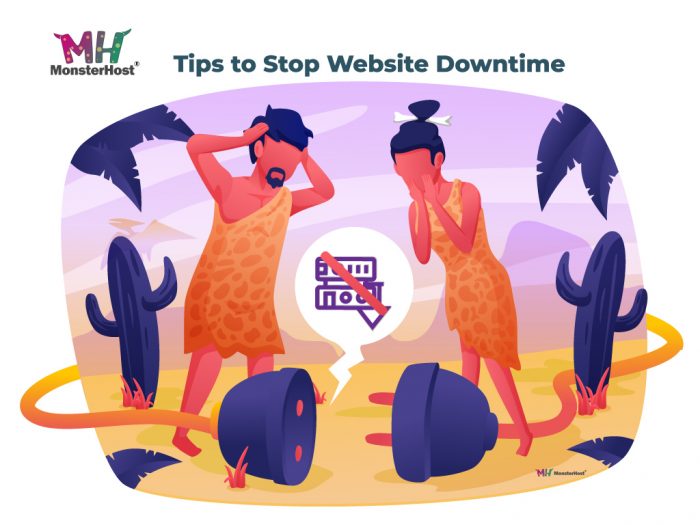The internet has made it possible for businesses to keep their doors open 24/7. The result? Happy customers who are no longer limited to regular opening hours. Having a website for your business tells customers that anytime is the right time to visit, browse and shop.
The only thing that can close your door online is the dreaded downtime.
Table of Contents
What is downtime?
Downtime happens when your website is unavailable online, loads slowly or does not function as it should. This is bad for business primarily because the internet facilitates a “now” movement and so customers expect full-time accessibly to your website at all times.
When there is a delay, they grow frustrated and usually just go to another site.
Why do websites have downtime?
Even the best websites like Instagram, Twitter and Facebook experience downtime. When these social media sites go offline there is usually widespread frustration.
Websites go offline for several reasons. Knowing why your site is experiencing downtime is the first step in getting it up and running again. Here are a few reasons your site maybe be experiencing downtime.
1. Increase in Traffic
The goal of an effective website is to increase traffic. Incidentally, one of the primary causes of downtime is heavy traffic. Even Twitter suffered from this during the famous 2014 Oscar selfie with Ellen DeGeneres and a number of actors.
2. DDoS attack
Sometimes increase traffic to your site resulting in downtime is not legitimate traffic. It is sometimes the result of a DDOS (Distributed Denial of Service) attack on your website.
DDoS attacks occur when malicious persons overwhelm a server with tons of requests causing it to crash.
3. Server overload
Your website is housed on servers connect through your hosting platform. However, when these servers are slow your website’s uptime is negatively affected.
Shared hosting though affordable can result in downtime since you are actually sharing the speed of the hosting platform with others.
Invest in dedicated hosting services that will prioritize the uptime of your website.
4. Non-renewal of domain
This may seem unbelievable, however, if you do not have an automatic payment for your domain in place, you may forget. Should this happen your site will go down, since it is not attached to the server.
How does downtime affect your business?
Every second your business is not online you are losing potential reach, customers and sales. Your website is the face of your company and is expected to facilitate ease of communication with your audience.
As it is with a brick and mortar locations, if your doors are locked you cannot engage new and/or returning customers. If persons cannot find what they are looking for in a set place, they start looking elsewhere.
Downtime can affect your business both in the short and long-term in the following ways:
- A decrease in SEO ranking
- Loss of customers and potential revenue
- If prolonged can negatively affect the credibility and reputation of your site
Tips on avoiding downtime
For the most part, you can put measures in place to keep your site online. However, there are cases, such as attacks that you do not have control over. If you are vigilant, you can still greatly reduce even attacks, which can kick your site offline.
1. Know what is causing your site to go offline
To fix a problem you first have to know what is causing it. Downtime can be a result of several factors such as hacking, traffic overload or server problems. Once you decipher which of these is the culprit, the problem is easy to be solved. Knowing what usually affects your uptime allows you to implement personalized preventative measures so the same problem does not exist in the future.
2. Utilize Website Monitoring tools/plugin
It is physically impossible to stand guard over your website. Since you can’t your site may be going offline without your knowledge. If this downtime is happening during your peak hours, you are definitely losing sales and customers.
By installing a website monitoring tool, you will be able to keep track of the times your website goes offline while diagnosing the cause as well. That way you can fix them in time and put measures in place to reduce its recurrence.
3. High-Quality Hosting Platform
Would you build your house at the foot of an active volcano? No, you wouldn’t. The same concept is true when hosting your site. A low-quality, slow hosting platform results in poor website performance and frequent downtime.
To prevent this, splurge a little invest in a fast and reliable hosting provider. This way they can help to monitor, update and backup your files. A good hosting provider also helps to protect your site and send you alerts on downtime and suspicious logins.
4. Backup Hosting
It’s important to back up your website for possible worst case scenarios. You can do this by setting up a secondary hosting on a separate server.
This way you can have a reliable backup of your primary account should its server goes down.
You can also use a backup service that automatically saves multiple copies of your site. If your site unexpectedly goes offline because of attacks or server glitches, you can restore all the data and files when your site goes back online.
5. Use Social Media to fill the gap during downtime
Your site has just gone offline and you already know the effects this can have on your business. Think quickly, what do you do while you working to get it back online?
Jump on your social media platforms and start engaging customers. Create a line of communication to reach them, answer questions about why your site is down and inform them of when it should go back online.
Conclusion
A properly managed website can significantly grow your business. Therefore it is important that your always online and accessible.
However, downtime happens and you can’t always prevent it. Your job is to put systems and proper tools and services in place to get you back on in the shortest possible time.






